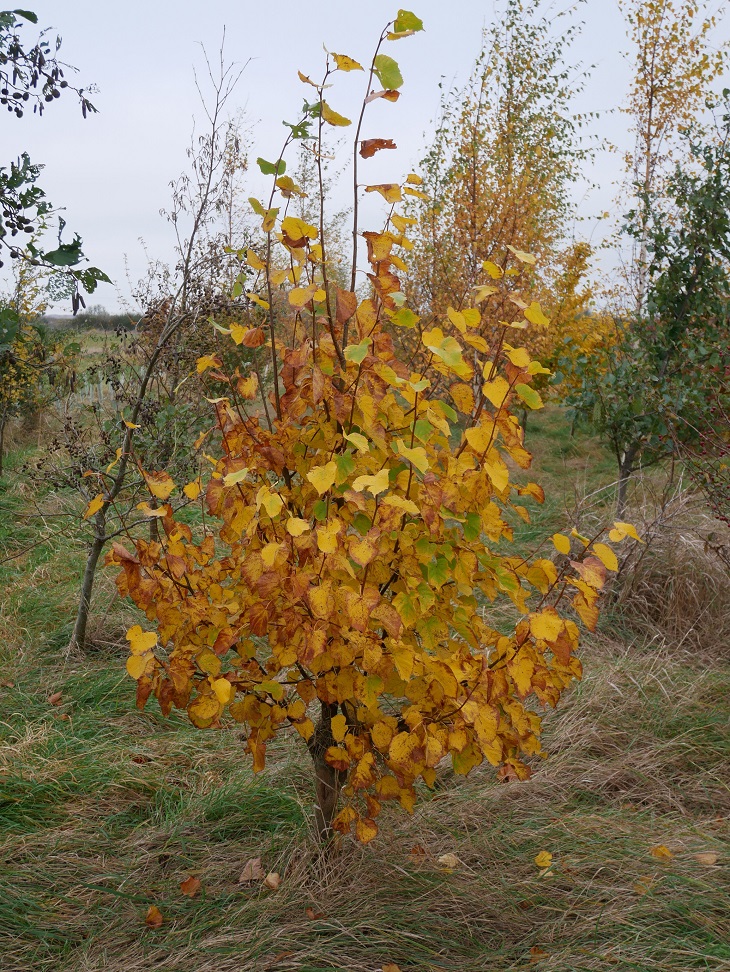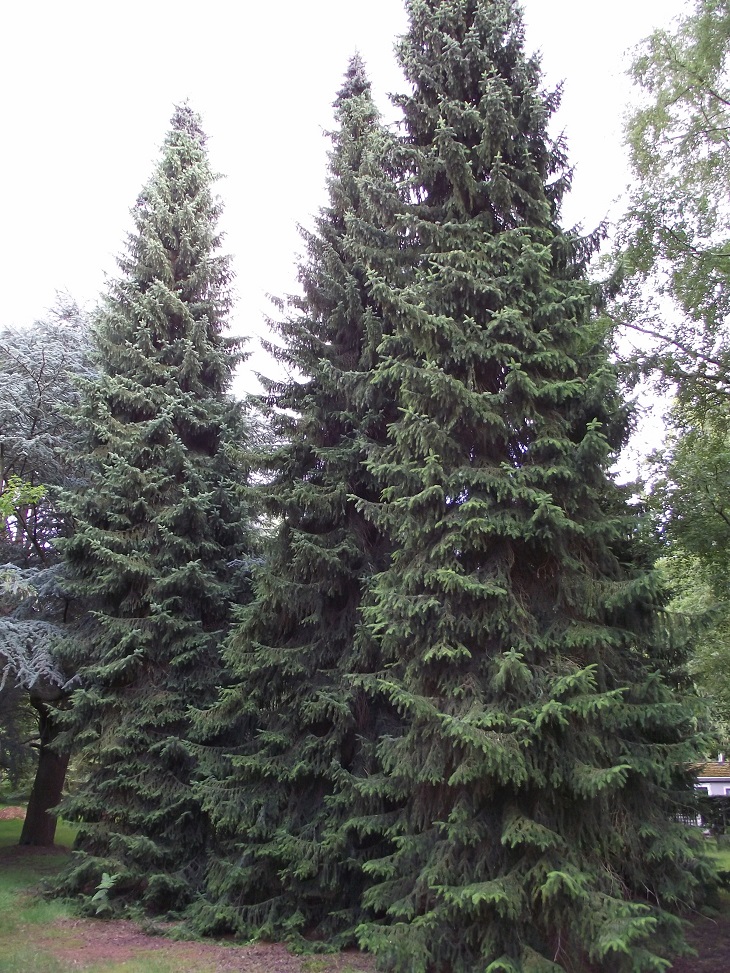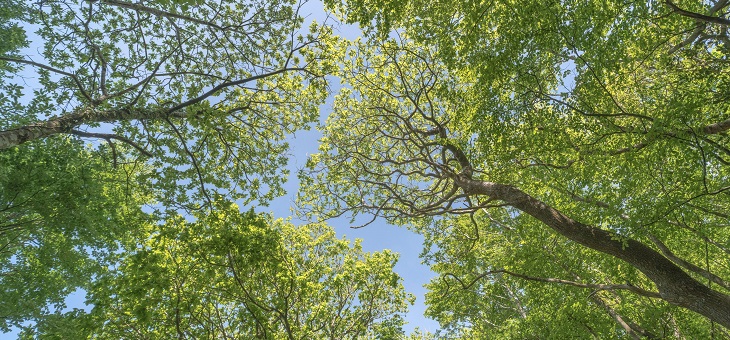Climate action is finally beginning to take centre stage and we’re all being encouraged to grow more trees.
World leaders have pledged to protect more land from deforestation, but what can you, your community group or your neighbours do to make a difference?
The environmental benefits of trees range from locking in carbon and attracting wildlife, to reducing flood risk and allowing the planet to breathe.
David White, the Forestry Commission’s woodland and climate change adaption adviser, says: “We need to build on the tree planting progress we have made this year and at the 2021 United Nations Climate Change Conference. Now is the perfect time for people to get involved by joining a planting event in their community or buying a tree for their garden. But it’s also important to choose the right tree for the right place, and for the right reasons.”
“Whatever tree you choose, make sure to source it from a reputable nursery,” adds Mr White. “Doing so helps protect gardens, forests and ecosystems against destructive plant pests and diseases.”
Read: Australian natives for your garden or balcony
These are Mr White’s five favourite trees for tackling and adapting to climate change.
1. Hornbeam – a renewable alternative to fossil fuels
My favourite today. This hornbeam is 20 years old. I know because we planted it. Every year I admire the perfect symmetry. #symmetry #hornbeam #Autumnleaves pic.twitter.com/XRMYtwX34q
— Ruth Goudy (@theflowerwriter) November 9, 2021
The hornbeam is a beautiful tree native to England. The Romans used hornbeam to make their chariots because the wood is so strong. It also provides shelter, roosting, nesting and foraging opportunities for birds and small mammals, boosting biodiversity, and produces a high-quality fuel for fires – as a replacement for fossil fuels.
Plant nursery Heritage Fruit Trees says: “We are surprised the hornbeam (Carpinus betulus) is not more widely grown in Australia. It is a very common garden plant in England and does well in our garden in western Victoria. It’s a deciduous tree that can be easily pruned and shaped for topiary, espalier, pleaching and hedges. The tips of the new growth have a lovely weeping habit. The wood of the trunk is extremely hard and can be polished until it resembles horn (hence its common name).”
Tree care: hornbeam can be coppiced or pollarded, meaning it’s a good choice for gardens. If you grow it in a hedge, it keeps its leaves all year round so will give you privacy. In autumn it will bring a riot of colour to your garden.
2. Eucalyptus – for sequestering carbon
There are some 800 species of eucalyptus and the majority of these occur naturally in Australia, with only a few species extending naturally into parts of Melanesia and the Philippines. Eucalyptuses grow right across the Australian continent, from the arid to the cold sub-alpine regions.
“It’s a very fast-growing tree, which locks up carbon all year round and the large leaves act as a natural air conditioning unit,” says Mr White. “All types of eucalyptus require full sun, however, some species will tolerate areas with semi-shade. They also adapt well to a wide range of soils, from hot, dry sites to slightly wet, as long as the area is well-draining.”
Tree care: prune annually to control growth. They can be cut back quite ruthlessly, so if you’re tight on space, they lend themselves to being in a container on a patio. Their lovely silvery foliage looks good all year round.
Read: ‘Super plants’ could help reduce air pollution in your home and garden
3. Small-leaved lime tree – for enriching soil and biodiversity

Also known as ‘small-leaved linden’ or ‘little-leaf linden’. This is a tall deciduous tree with a dense round crown. The bark is grey or brown and ridged with shallow furrows. The leaves are distinctively heart-shaped and turn yellow in autumn.
“As they fall and start to decompose, the golden leaves from this handsome tree are brilliant for improving the health of the surrounding soil, supporting other plants to flourish around it,” explains Mr White. “They also host an abundance of insect life, in turn attracting birds and other animals in the food chain, while the flowers have a rich, heavy scent that is especially alluring for bees.”
Tree care: this large deciduous tree can grow to over 20 metres, so think carefully about where you plant it. It grows best on moist but well-drained, nutrient-rich soils. It needs plenty of sunshine, excellent drainage and improved soil, and shouldn’t be exposed to standing water.
4. Serbian spruce – for resistance to pollution in urban areas

The Serbian spruce is a popular Christmas tree and is also used for bonsai tree production due to its slender growth. If allowed to grow freely, it becomes a handsome tree of tapering, spire-like habit.
“The sweeping branches of this evergreen conifer are designed to shed snow in colder environments, so they can survive in the harshest of landscapes and extreme, cold conditions. They’ve also shown resistance to air pollution, so can grow in areas with poor air quality,” Mr White observes.
“The Serbian spruce is a graceful, slender tree with dark foliage, with an unusual look that comes from its dark glossy green needles on the upper side of the branch and cream colour strips on the bottom.”
Tree care: this tree can do well even in harder soil, but it’s still a good idea to break up the soil and mulch prior to planting. It grows straight and relatively narrow for a forest tree – spreading manure isn’t necessary, and pruning is also not normally a priority.
Read: Tasmania’s giant trees on camera
5. Holm oak – will survive storm-lashed coastal areas and polluted cities
Unlike traditional English oaks, the evergreen Mediterranean Holm oak will thrive in our dry, arid climate. It has been in cultivation in Australia for nearly 150 years and is a valuable evergreen shade tree.
The dense canopy is formed of leathery dark-green leaves with a toothed margin, a shape reminiscent of holly leaves. It can be kept trimmed to 5x3m for a drought-tolerant green screen.
“[Holm oak] is resistant to salt spray from the sea, so is often planted as a windbreak in coastal areas, which are facing tougher weather conditions because of climate change,” says Mr White. “It is also tolerant of many growing conditions, including polluted air, so it is versatile and suitable for urban areas too, acting as hedging, windbreaks or topiary for gardens in the city.
“Left to grow on its own in a field or forest, it will become a large, structural tree with a rounded crown.”
Tree care: Holm oaks don’t like freezing conditions and during severe winters they are prone to dying or losing their leaves, so may not do so well in places such as Tasmania and southern Victoria.
Do you have trees in your garden? Have you planted any new trees in the past year? Let us know in the comments section below.
– With PA
If you enjoy our content, don’t keep it to yourself. Share our free eNews with your friends and encourage them to sign up.

